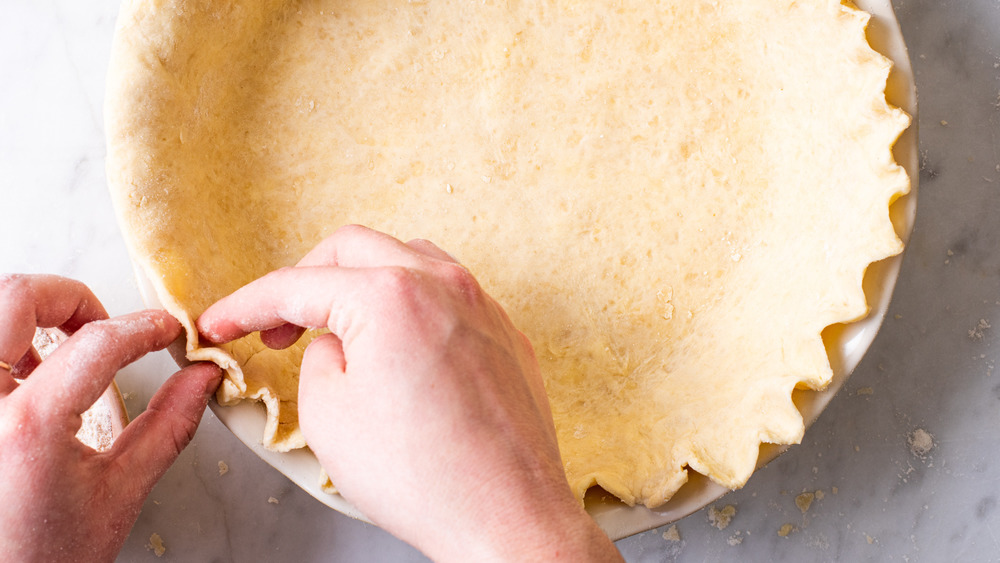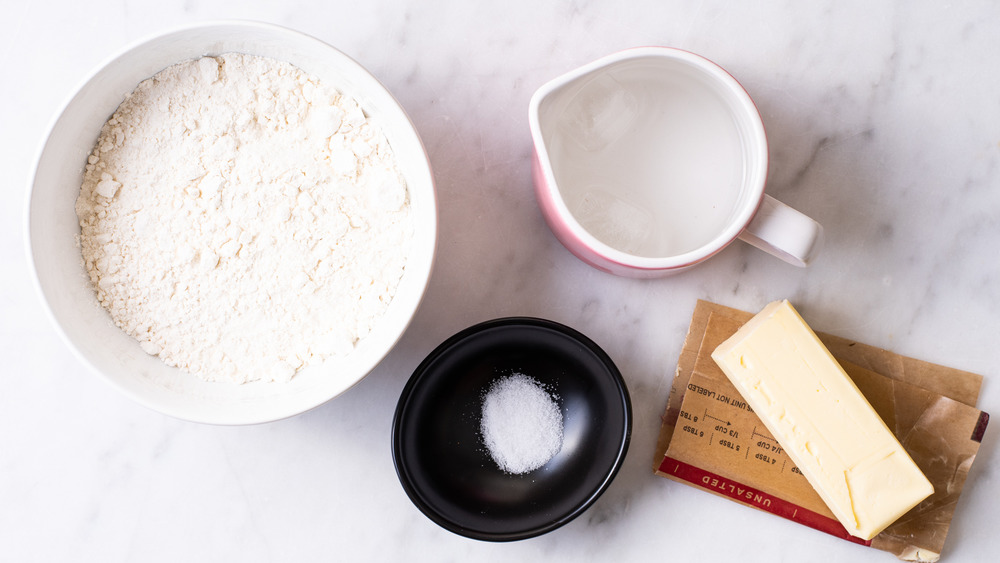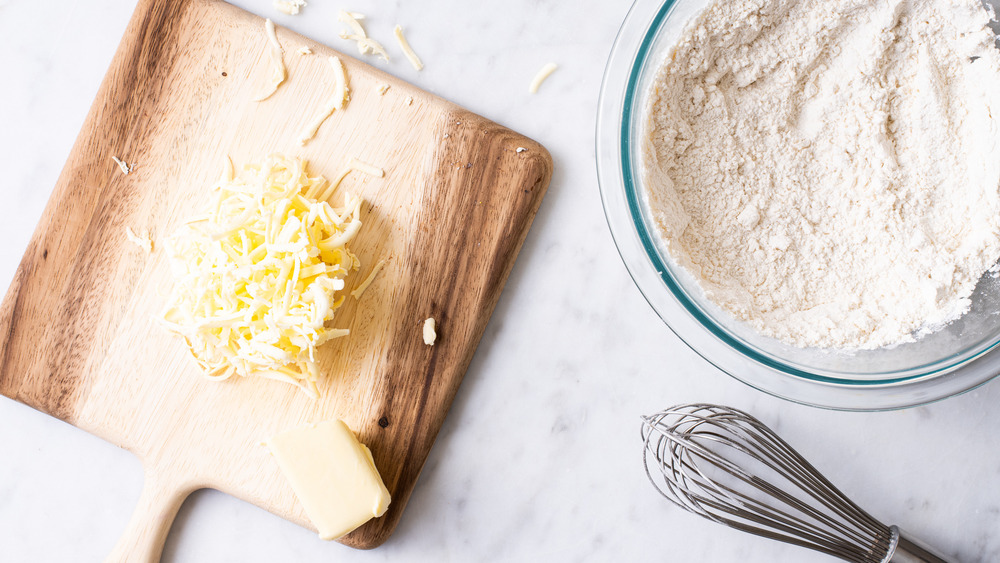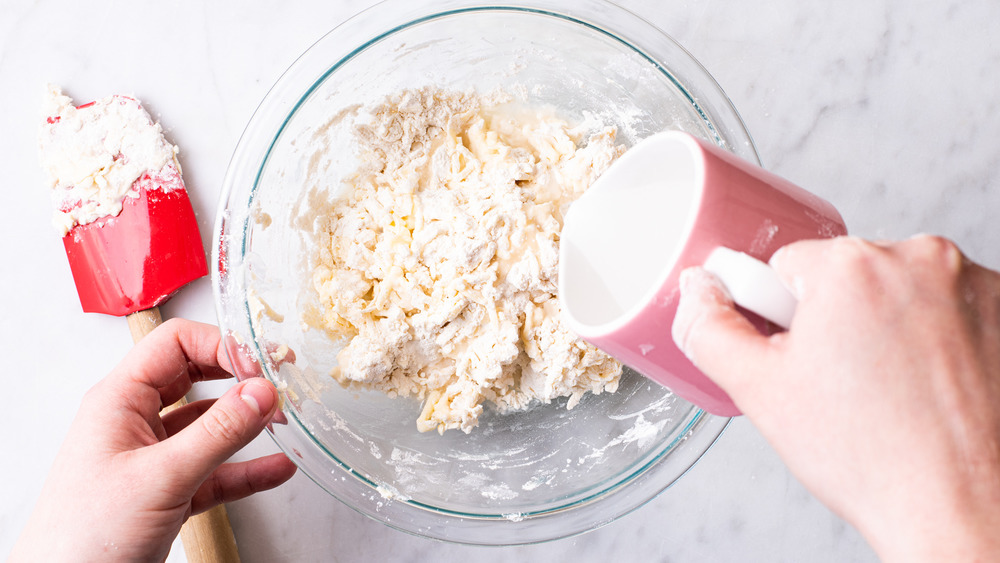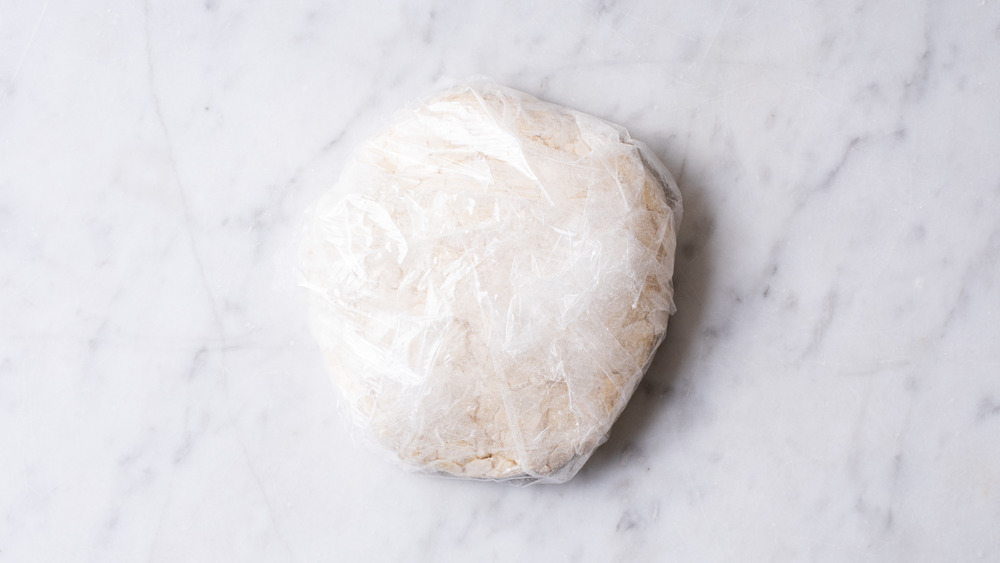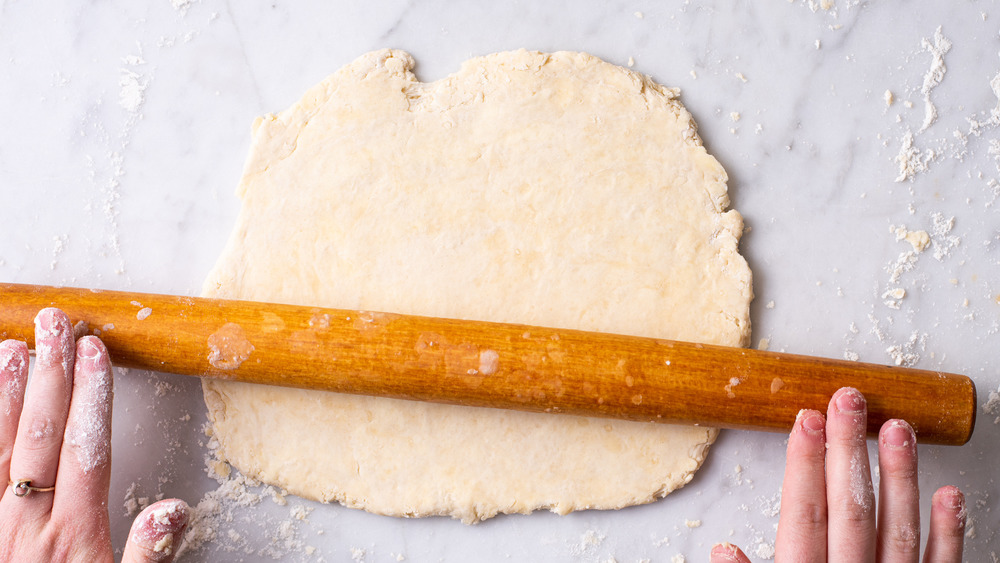Easy Pie Crust Recipe
A homemade pie crust is light-years ahead of any premade one from the store. Flaky, buttery, and addictively delicious, homemade pie dough calls for fewer than a handful of ingredients, and we've got a super simple technique for making it happen.
The trick? Grated butter. Grating results in perfectly uniform strands of cold butter that are perfect for tossing with flour. And the best part? There's no need to fuss with a bulky food processor.
Pie crust is only as good as the butter it's made with. Look for an organic, grass-fed butter and be sure to use an unsalted one, so you can control the amount of salt in the crust.
The recipe below makes one small pie crust. If you're making a pie with a top and bottom, double the recipe and divide the dough into two. This dough also works for rustic galettes — both sweet and savory!
Gather your ingredients
To make this pie crust, you'll need all-purpose flour, cold unsalted butter, ice water, and salt.
The key to making a light and flaky crust is using really cold butter. It needs to be firm and straight-from-the-fridge cold. The goal is for the bits of butter to become suspended in the dough. That way, only when the crust goes into the oven will the bits of butter melt, creating those signature flaky layers. For this reason, it is equally important to use ice water; warm or room temperature water would melt the butter.
Incorporate the butter
To start, whisk the salt into the flour to ensure it gets evenly distributed. Then it's time to incorporate the butter. There are many ways to do this — like using a pastry cutter, fork, or food processor, or even just rubbing the butter into the flour with your fingers.
We recommend grating the butter first on a box grater. In our opinion, it's the least messy and most efficient technique. Grating creates even stands of butter that can be easily tossed with the flour. Remember, the goal is to work quickly to avoid melting the butter.
Incorporate the water
Next, add the ice water to start bringing the dough together. While gently tossing the flour-butter mixture with a spatula, gradually sprinkle in just a bit of water. Again, you want to work quickly to avoid warming the dough.
At this point, the dough will look dry and shaggy, but you'll probably need to use less water than you may think the dough needs. Don't worry — it will hydrate fully while it rests. If you add too much water, you may end up with a tough, dense crust.
Rest the dough
Once you've created the shaggy dough, turn it out onto the counter and gather it into a loose disc. Be gentle here, since overworking the dough may contribute to a dense crust as well. Just press the mixture together with your hands until it comes together, kneading once or twice.
Wrap the dough in plastic wrap, using the plastic to help shape it into a disc. Now refrigerate the dough for at least an hour or up to several days (at this point, you can also freeze it).
Roll out the pie crust
When you're ready to roll out the dough, take it out of the fridge and let it sit at room temperature for about 5 minutes. Then unwrap it and place it on a lightly floured counter.
Using a rolling pin, roll out the crust to your desired shape. If you notice the dough cracking around the edges, let it rest at room temperature for a few minutes before continuing to roll. If the dough starts to feel sticky or wet at any point while you're rolling it, place it back in the fridge to firm up for a few minutes before continuing to roll.
At this point, you can fit the crust into a pie pan and use as needed. Alternately, you can pile on sweet or savory toppings (like berries or caramelized onions) and make a galette instead.
Easy pie crust for all your favorite pie recipes
Homemade pie dough calls for fewer than a handful of ingredients, and we've got a super simple technique to help you make the flakiest, most delicious crust.
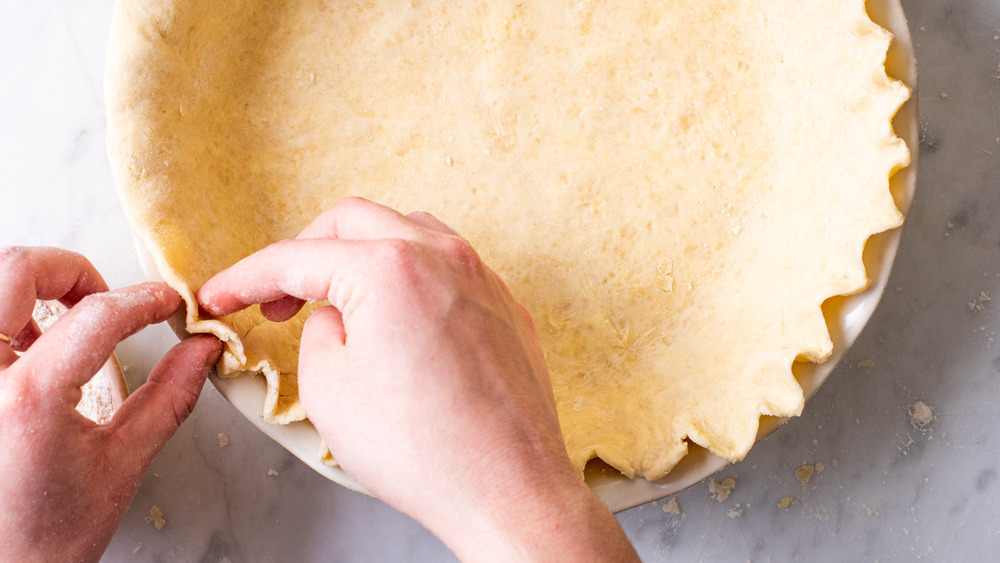
Ingredients
- 1 cup all-purpose flour, plus more for dusting
- 1/4 teaspoon fine sea salt
- 6 tablespoons chilled unsalted butter (3/4 of a stick)
- About 1/4 cup ice water
Directions
- Place the flour and salt in a large bowl and whisk to combine.
- Grate the cold butter on a box grater and add to the flour mixture. Working quickly, gently toss the butter with the flour, just until it's evenly distributed and all the strands of butter are coated in flour.
- Gradually sprinkle in the ice water while lightly tossing the flour-butter mixture with a rubber spatula or fork. Toss until the water is evenly distributed. The dough will look very dry and shaggy.
- Turn the dough out onto your counter and gather it into a loose disc with your hands. Don't worry if it seems too dry -- the dough will hydrate fully in the fridge. Work quickly, as you do not want to warm the mixture with your hands. Wrap the dough in plastic wrap, using the plastic to help shape it into a disc. Refrigerate for at least an hour (or up to several days).
- When you're ready to roll out the dough, let it sit at room temperature for about 5 minutes.
- Then unwrap the dough and place it on a lightly floured counter. Using a rolling pin (or a bottle of wine!), roll it out to your desired shape, dusting with more flour as needed. If the dough is cracking, let it rest at room temperature for a few minutes before continuing to roll. If it starts to get sticky and wet, place it back in the fridge to firm up for a few minutes.
- Use and bake as desired.
Nutrition
| Calories per Serving | 1,065 |
| Total Fat | 70.3 g |
| Saturated Fat | 44.0 g |
| Trans Fat | 2.8 g |
| Cholesterol | 183.2 mg |
| Total Carbohydrates | 95.4 g |
| Dietary Fiber | 3.4 g |
| Total Sugars | 0.4 g |
| Sodium | 595.6 mg |
| Protein | 13.6 g |
